Anthuriums are stunning tropical plants that have taken the houseplant world by storm. However, growing Anthuriums can be tricky, especially when it comes to providing them with the right amount of light. Proper lighting is crucial for the health and growth of these plants, and getting it wrong can lead to a range of issues, from stunted growth to the failure to produce inflorescences.
In this blog, we will explore everything you need to know about Anthurium light requirements, including how much light they need, the best location to place them, common light problems, and how the light affects the leaf color.
Whether you’re a seasoned anthurium enthusiast or just starting your anthurium collecting journey, this guide will provide you with all the information you need to keep your Anthuriums thriving and looking their best. So let’s discover how to give your Anthuriums the dazzling light they need to thrive!
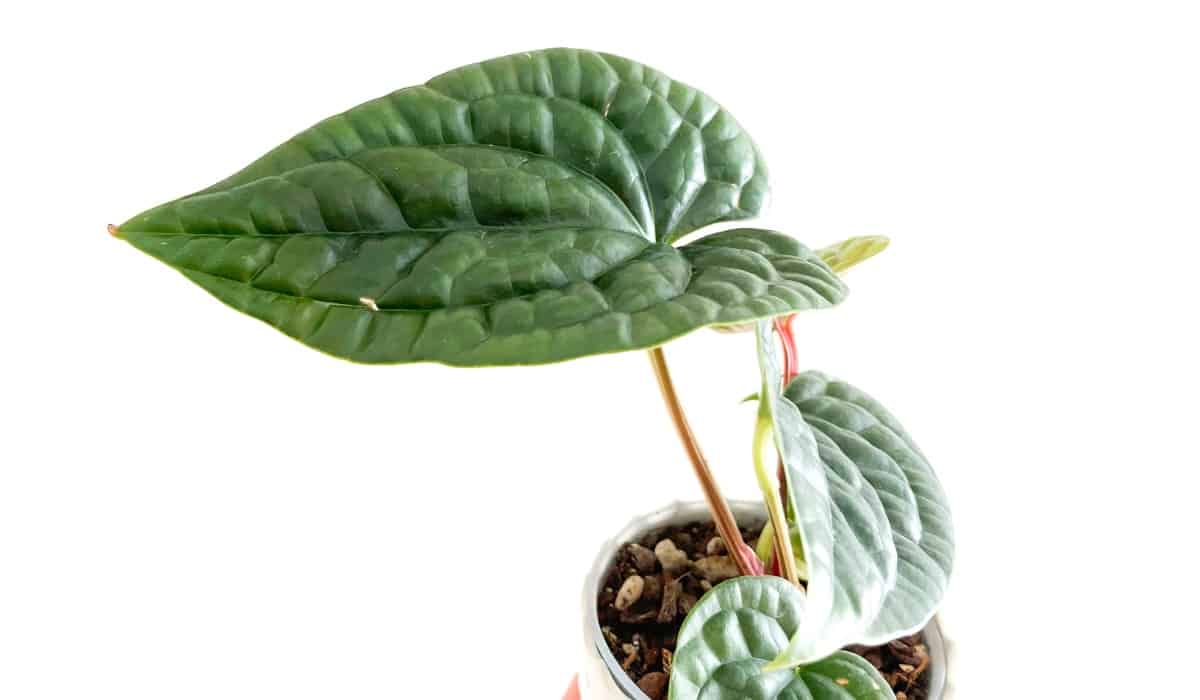
Ideal Light Requirements for Anthurium Plants
Anthurium needs bright indirect light to thrive. Bright indirect sunlight roughly translates to 500-1000 footcandles (fc). If measured in PPFD values, anthurium plants need between 15 and 100 μmol/m²/s.
You’ll need to provide your anthurium an equivalent of a minimum of 400 fc of light for 10-12hrs a day to see regular growth. Anything below 100 footcandles and your anthurium will not make it, but more on not enough light and too much further in the article.
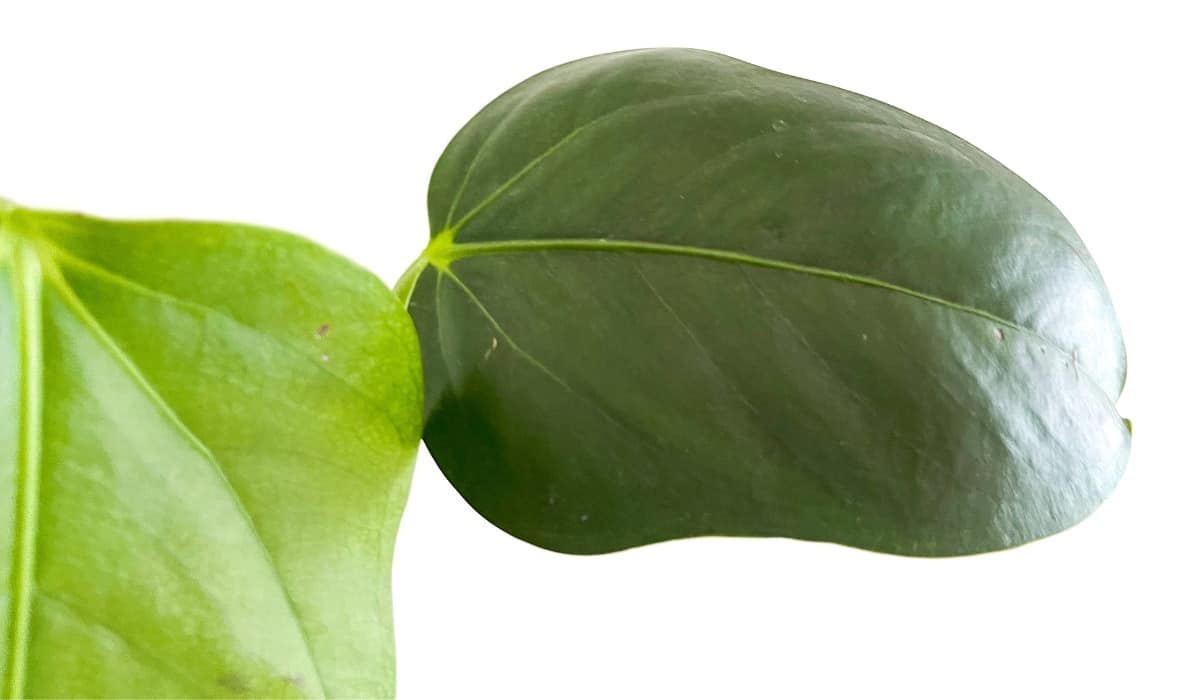
Now let’s understand what it all means for your anthurium and the light you’re going to need to provide it to thrive.
The Role of Light in Plant Growth
Light is by far the most important factor in the overall growth and health of the plant. After all, light is the primary source of food for plants through the process of photosynthesis.

Photosynthesis
Light plays a crucial role in photosynthesis, which is the process by which plants convert light energy into chemical energy stored in organic compounds. Photosynthesis is a complex biochemical process that is carried out in the chloroplasts of plant cells. During photosynthesis, plants take in water from the soil and carbon dioxide from the air. Then, they use the energy from the sun to turn them into glucose, which is a type of sugar. The oxygen that we breathe is actually a waste product of photosynthesis, and it is released into the air.
Apart from photosynthesis, light also regulates several other important physiological processes in plants, such as photomorphogenesis, photoperiodism, and phototropism. I included the definition of each at the very end of this post.
Types of light
Light is often categorized into these groups: direct sunlight, bright indirect sun, moderate indirect light, and low light.
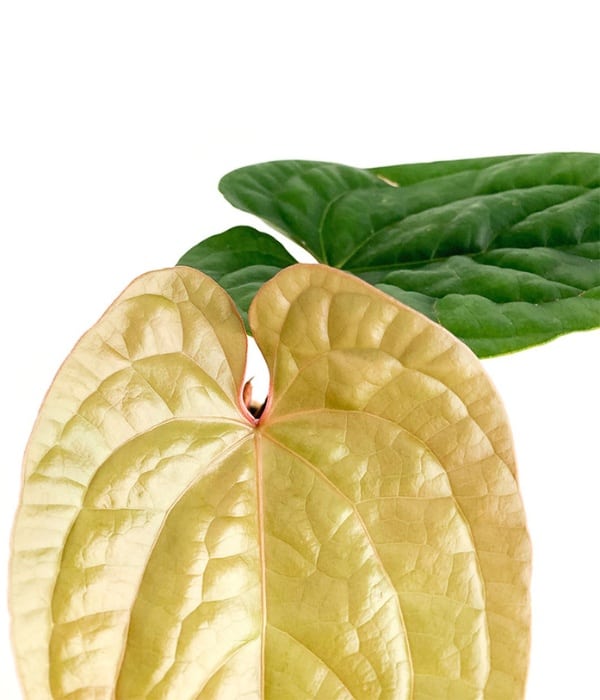
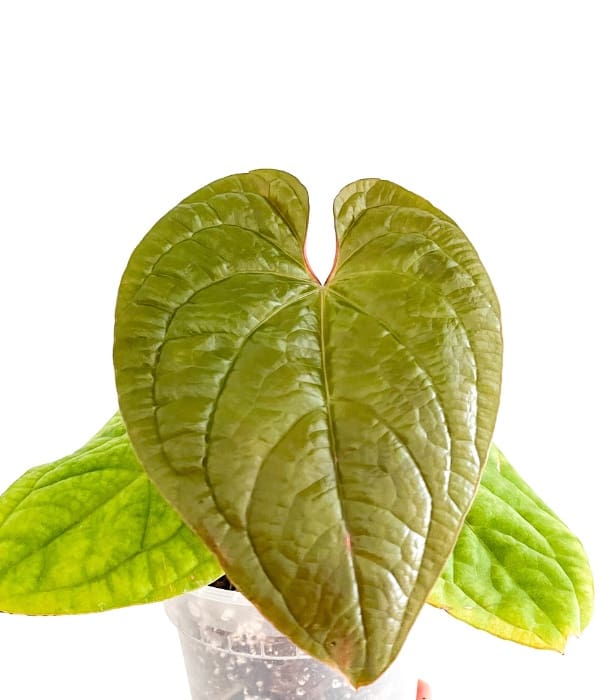
Direct sun
Direct sunlight or full sun can have an intensity of around 10,000 to 12,000 footcandles (fc) on a clear day at noon. But the intensity can vary depending on geographical location, time of day, and weather conditions.
It is also referred to as the morning sun or bright direct light. This is the full sun hitting your window sill. Only sun-loving plants like cacti or succulents will thrive in this environment. Your anthurium leaves will definitely scorch so avoid direct sunlight. But having a sheer curtain over your windows will turn this harsh direct light into bright indirect sunlight suitable for your anthuriums.
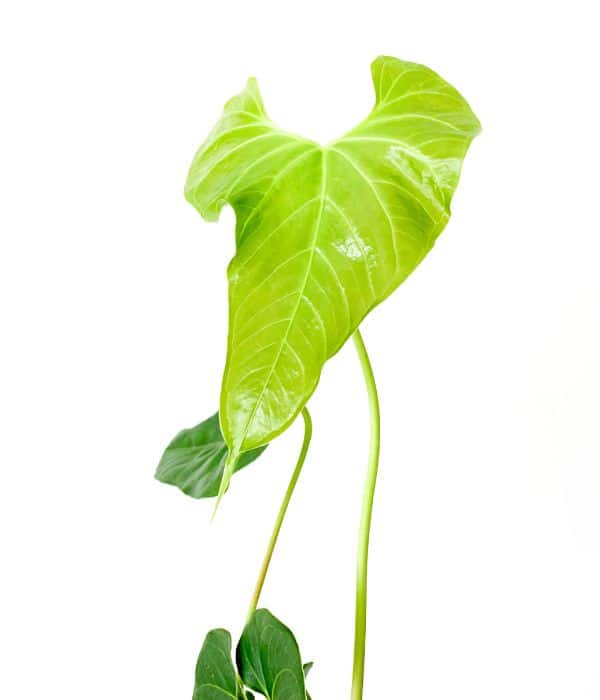
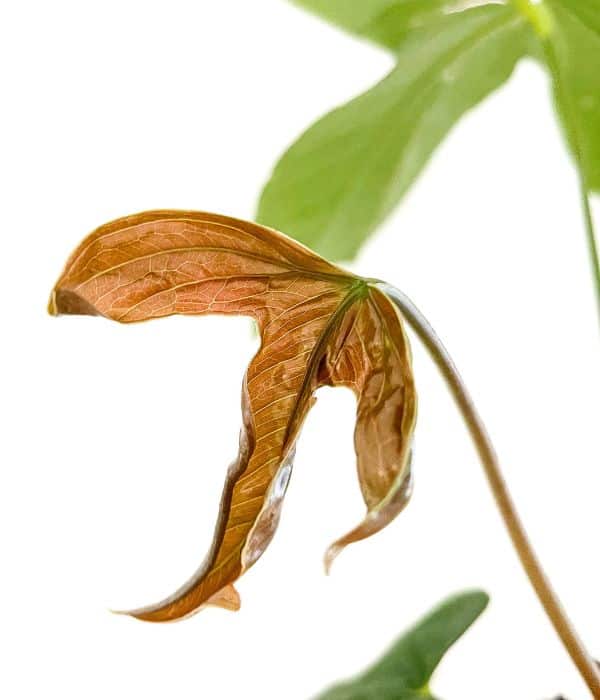
Bright indirect light
Bright indirect light refers to a moderate level of light that is diffused or dappled. Depending on your geographical location a sunny window blocked by a sheer curtain would have upwards of 800 footcandles and is in the top range of what anthuriums can handle.
Bright indirect light is also described as indirect light, bright light, bright filtered light, or indirect sunlight. This is the golden zone for most plants and is ideal for growing anthuriums.
Bright indirect light is in the range of roughly 500-1000 footcandles.
Moderate indirect light or low light
Moderate indirect light or low light is considered anything below 500 footcandles. Low light is around 100 footcandles and below. This type of light is not suited for anthuriums.
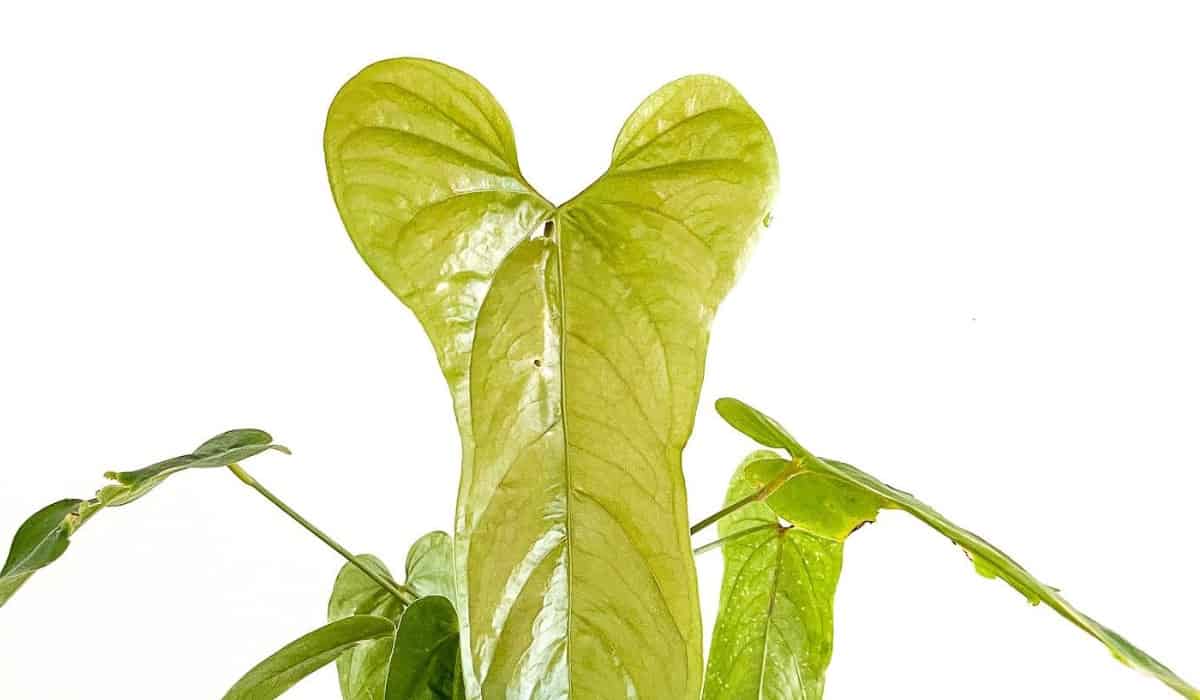
Providing optimal light conditions for anthurium
The intensity, or quality, and duration of light are important factors to consider when providing optimal light conditions for your anthurium growth.
Intensity & Quality
Intensity is the quality of light the plant receives. The intensity and quality of light play a crucial role in the rate and efficiency of photosynthesis.
Duration
Duration simply means the amount of light each day your anthurium receives. Longer days mean more time for photosynthesis which results in faster growth. Shorter days are the opposite, it signals your plant to take a rest. If you grow your anthurium under grow lights than the duration of light can be set steady and you can experience growth throughout the year. The optimal duration of grow lights for an anthurium plant is between 10-12 hours a day. I keep mine set on an automatic 12-hour timer.
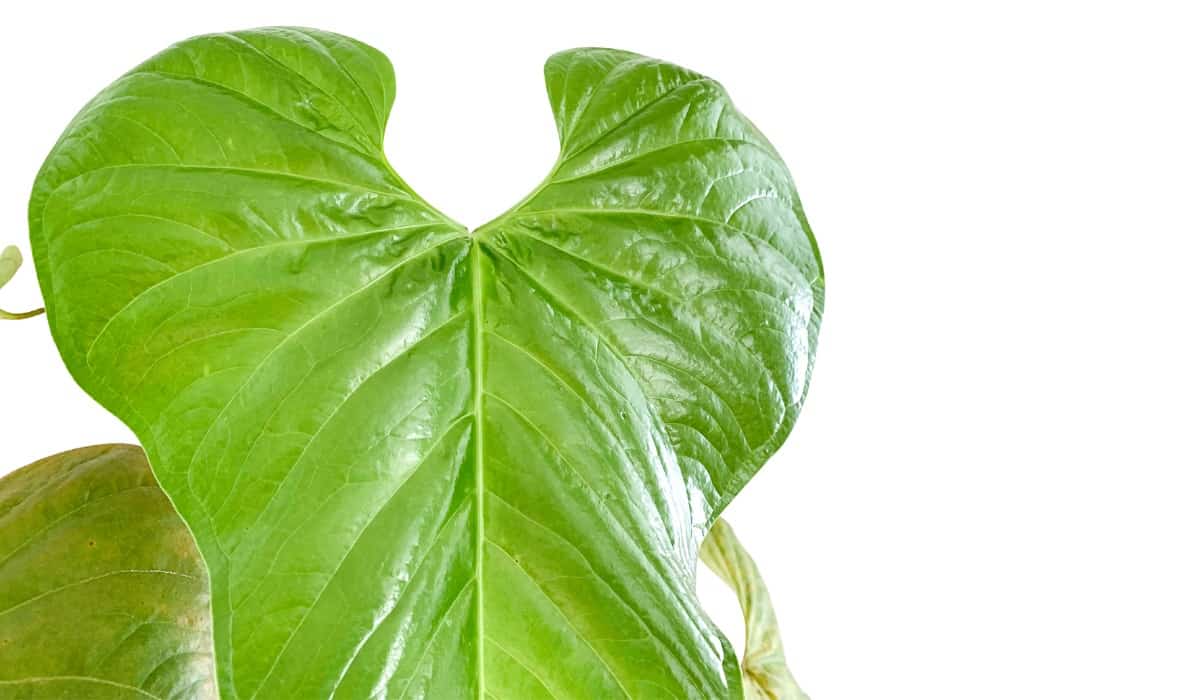
How to measure light
The two most popular units measuring light are the footcandle (fc) and lux. But the most accurate is PAR. Let’s understand these three units of measurement.
Footcandles & lux
Footcandle (fc) is a standardized unit of measurement used to quantify the intensity of light, commonly referred to as illuminance, in a specific area. It measures the amount of light that falls on a surface in units of lumens per square foot. One footcandle is equal to one lumen of light spread over an area of one square foot. Foot candles as measurement are used more often in the US while lux is more often used in Europe. A measurement of one lux is equal to the illumination of one square meter. 1 footcandle equals approximately 10 lux.
Footcandles will give you a basic idea of whether your grow light is providing a lighting environment similar to full sun, partial sun, or shadier conditions.
Footcandles will provide readings of overall brightness even if the quality of light needed for photosynthesis is mediocre.
But if you want to be a pro at growing your anthurium plants under grow lights you would use PAR meters which give the amount of usable light for photosynthesis.
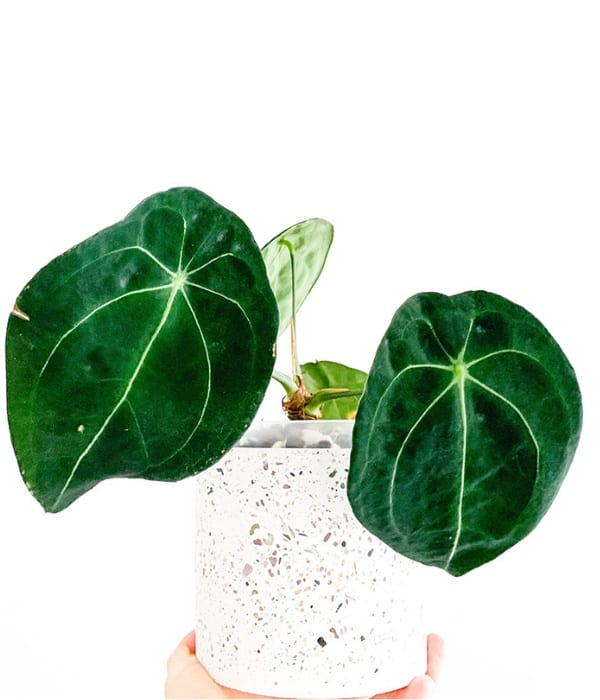
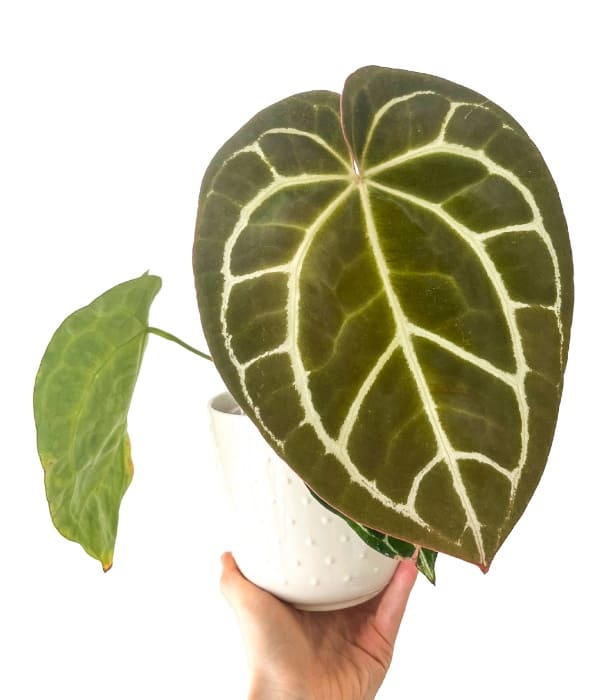
PAR (Photosynthetically Active Radiation) and PPFD (Photosynthetic Photon Flux Density)
PAR stands for Photosynthetically Active Radiation, and PAR light refers to the range of light that plants use for photosynthesis. This type of light is typically in the range of 400 (violet) to 735 nanometers (nm) (red) on the electromagnetic spectrum, which includes the visible light spectrum.
PPFD or Photosynthetic Photox Flux Density is a measure of the amount of PAR that is received by a specific area of a plant per unit of time (usually measured in micromoles per square meter per second, μmol/m²/s).
PAR measurement will tell you the color spectrum of light it delivers for your plants to use in photosynthesis. And PPFD measurement will tell you the portion of that light that actually reaches the plants and is available for photosynthesis.
This measurement takes into account the intensity and spectral distribution of the light, and is a more accurate way to measure the effectiveness of grow lights for plant growth than footcandles or lux.
Full spectrum grow lights will emit some percentage of all colors of light within the PAR range. Good grow lights will provide you with PAR and PPFD values so you know exactly how much useful light your anthurium will receive and at what distance you need to place the grow light for optimal growing conditions.
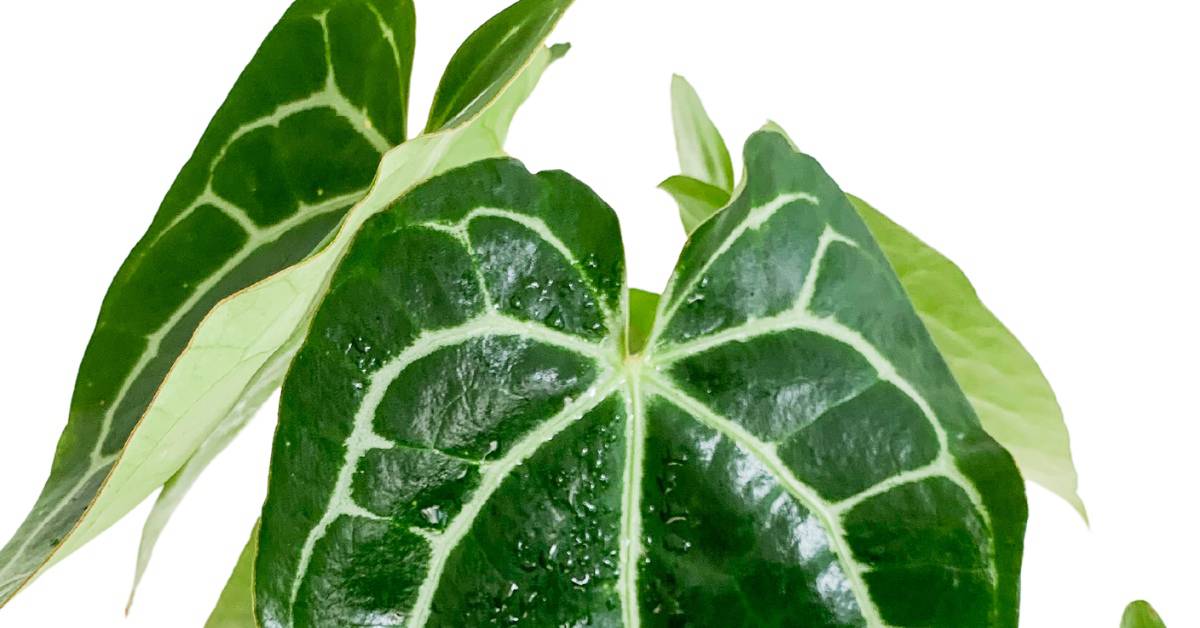
What does bright indirect light actually mean for your anthurium?
If you can provide your anthurium light that has more than 400 footcandles, you’ll see good growth. Anything below 200 footcandles and your anthurium will slowly deteriorate.
Expressed in PPFD values, anthurium light requirements range between 15 on the lower range and 100 at the higher range (in μmol/m²/s). Here is a good resource on genera-specific PPFD recommendations.
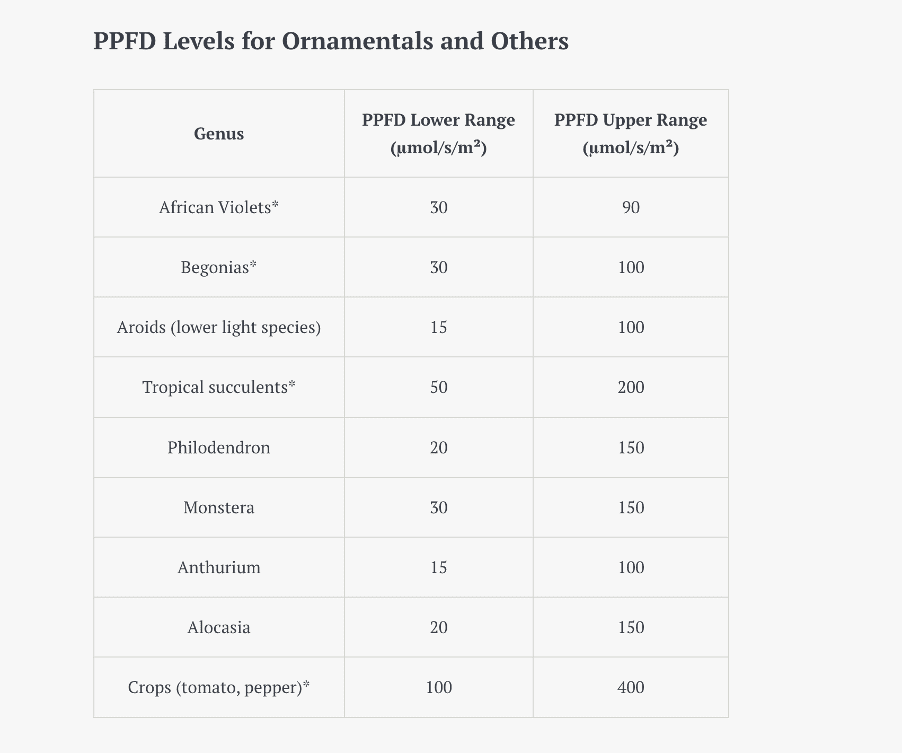
Naturally, Anthuriums grow beneath large canopies. So before the sunlight gets to them, it has been filtered by the leaves of tall trees or reflected by their trunks. As a result, the plants get filtered and indirect sunlight.
Although filtered light may suggest low light, you should note that an anthurium plant kept in the shade outdoors gets more sunlight than one that’s kept in a bright room.
For Anthuriums to thrive indoors, you need to create a growing area that’s closely related to their natural habitat. Because anthurium plants like filtered light, placing it on a window behind a sheer curtain will ensure it grows optimally in summer when the days are longer. In winter, you’ll need to supplement your anthurium plants with artificial lights for optimal growth.
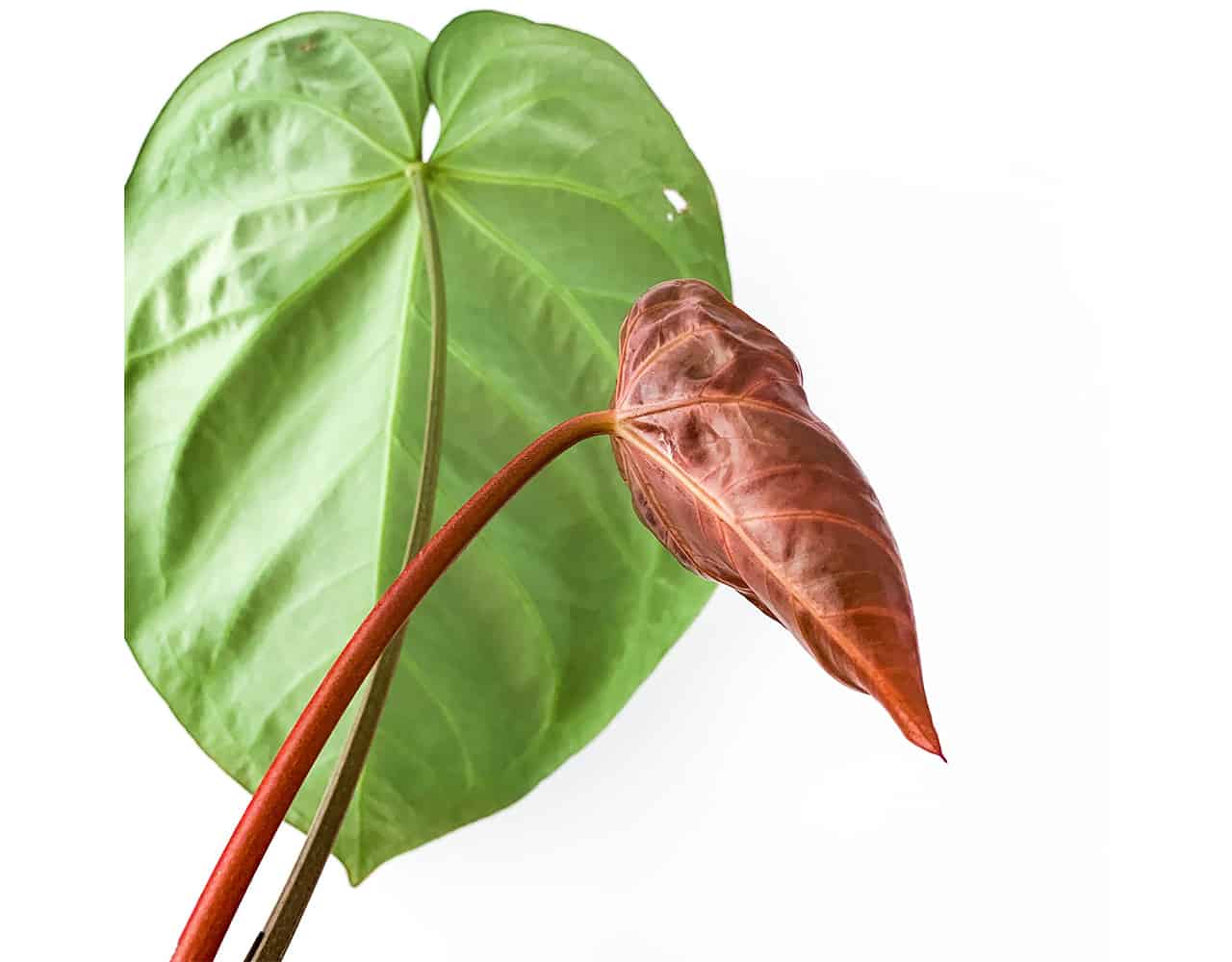
This information applies to anthurium species grown for their magnificent leaves such as Anthurium crystallinum, warocqueanum, veitchii or magnificum. The light intensity for anthurium grown for their blooms, mainly Anthurium andraeanum and its cultivars, will be higher to promote flowering. A light level of 1500-2000 footcandles is recommended for growing anthuriums for their colorful blooms.
While a range of 500-1000 footcandles is a general recommendation for light requirements of anthuriums, factors such as leaf texture can imply light tolerance levels. Velvet/refractive surfaces are an adaptation for low light, and smooth waxy/glaucous surfaces can be an adaptation to tolerate higher light. Keep that in mind when choosing which anthurium plants to place at what distance from grow lights.
Light needs of seedlings vs mature anthurium plants
In general, seedlings require higher light levels than mature plants. Put your anthurium seedling under full spectrum grow light and enjoy the growth spurt! If you don’t grow your anthurium seedlings under a grow light, you’ll be disappointed as most windowsills aren’t bright enough to provide consistently high-intensity light the seedlings require.
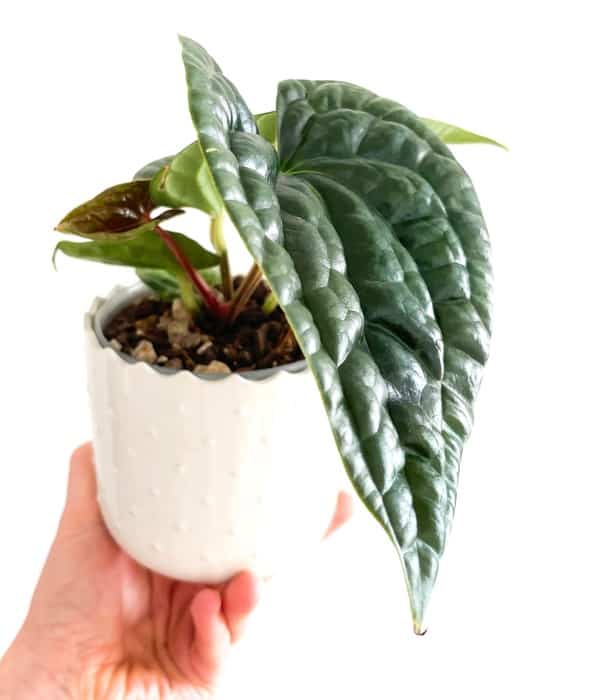
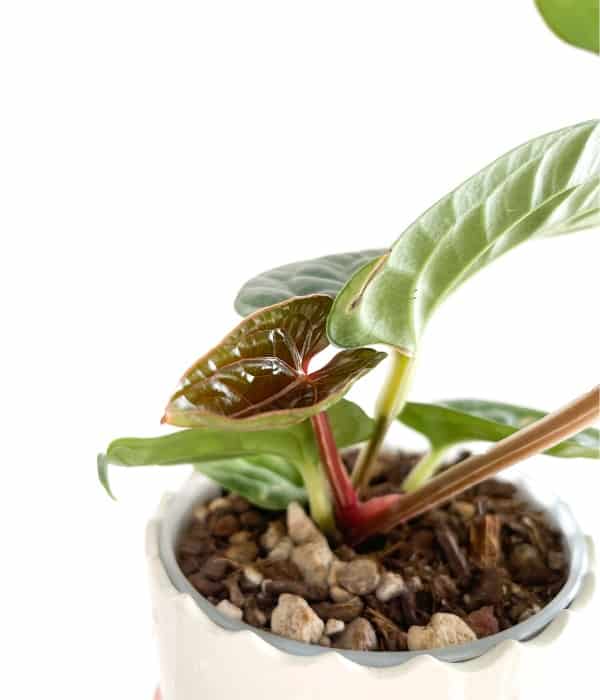
Depending on what grow light you’re using you’ll need to experiment a bit with the distance your seedlings are from the grow light. But if the new leaves don’t bleach, then you’ll know you have them at the right distance.
What to measure light with
For houseplant enthusiasts, there are two main ways in which you can measure light. You can use an app on your phone or a light meter.
Light measuring apps
The simplest, albeit not very accurate method, is to download a light reading app on your phone. I’ve tried free versions of these three apps: Light Meter, Photone, and LightMeter, and I think they do a basic job.
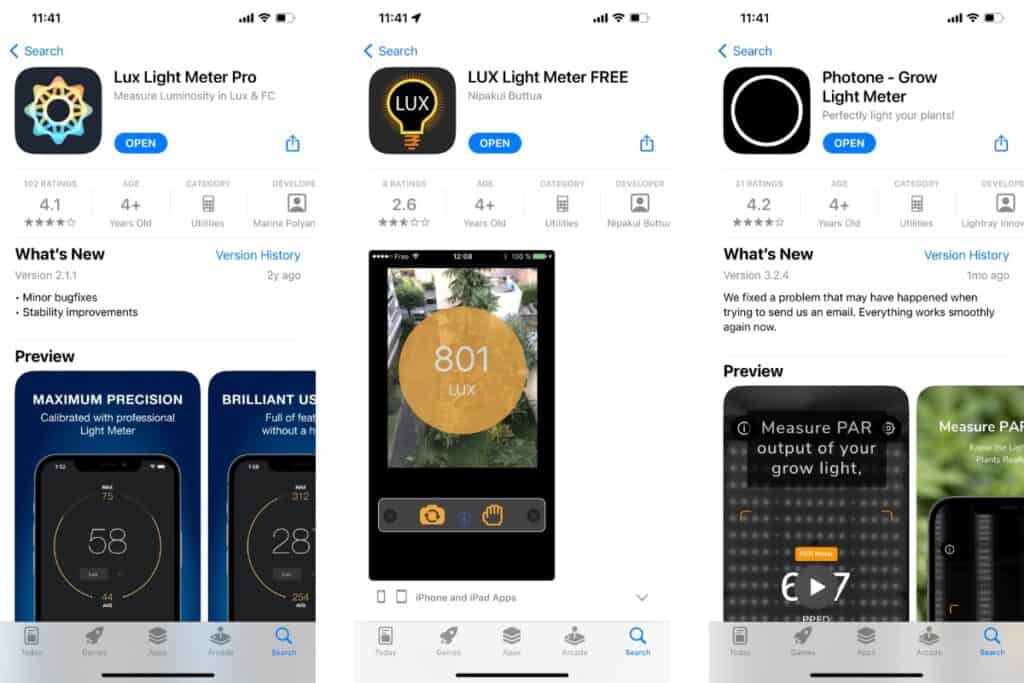
The caveat with this approach is that it very much depends on your phone camera sensors or how sensitive they are. Depending on the model of a phone, you might get a vastly different reading.
But still, this is an instant and free way of quickly measuring the light intensity in your living space. It’s a great method for quickly checking how much light your anthurium or any plant gets.
Light meters
A light meter is a must-have if you’re serious about caring for your plants. They’re not overly expensive but a really good investment. With a light meter, you’ll know the exact light conditions in your space.
Once you know it, and the light requirements of your plants, you’ll be able to make an educated decision about whether you need to move the plant to a brighter spot, under a grow light, or move away from the light source.
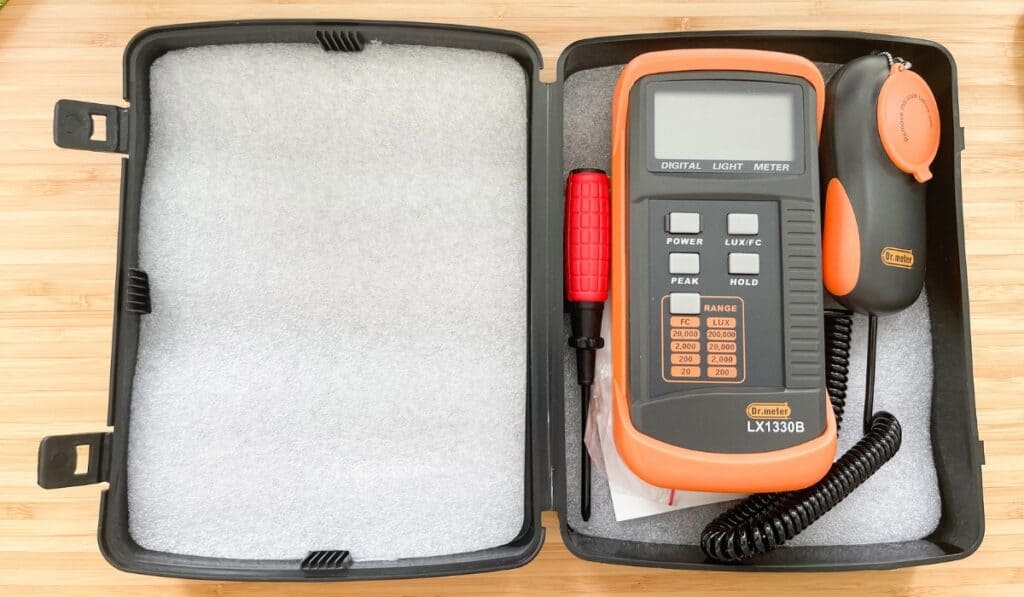
I’m currently using a Digital Lux Meter and it’s great. If it breaks down, I’m going to get the one that Darryl Cheng has developed (creator of @houseplantjournal).
You can watch a video review of his light meter from @unplantparenthood and see how to use it:
It’s important to keep in mind the shortcomings when using these measurements to estimate the amount of natural light that reaches your plants. Namely, you’ll get an instant reading of light at the exact moment but light intensity changes throughout the day based on the sun movement.
A good approach is to measure the light every couple of hours to see how the reading changes. This will give you a rough idea of how much light energy your anthurium plant is getting throughout the day.
But when used in conjunction with grow lights, you should measure by putting the device at a leaf level as the light intensity drastically changes with the distance from the grow lights.
For the most accurate values, use PAR meters which measure PPF and PPFD outputs.
Let’s discuss now what many of you want to see in your anthurium plants and that is how to make the leaves darker.
Does low light encourage darker leaves aka the science behind the leaf color
It is commonly perceived that putting anthurium away from the light source will encourage darker leaves. On a surface level, it kind of logically makes sense, right? Wrong! It’s actually the opposite.
Chlorophyll is the pigment responsible for the green color of leaves, and the more chlorophyll present in a leaf, the darker green it will appear. In low light conditions, plants produce less chlorophyll, resulting in lighter-colored leaves.
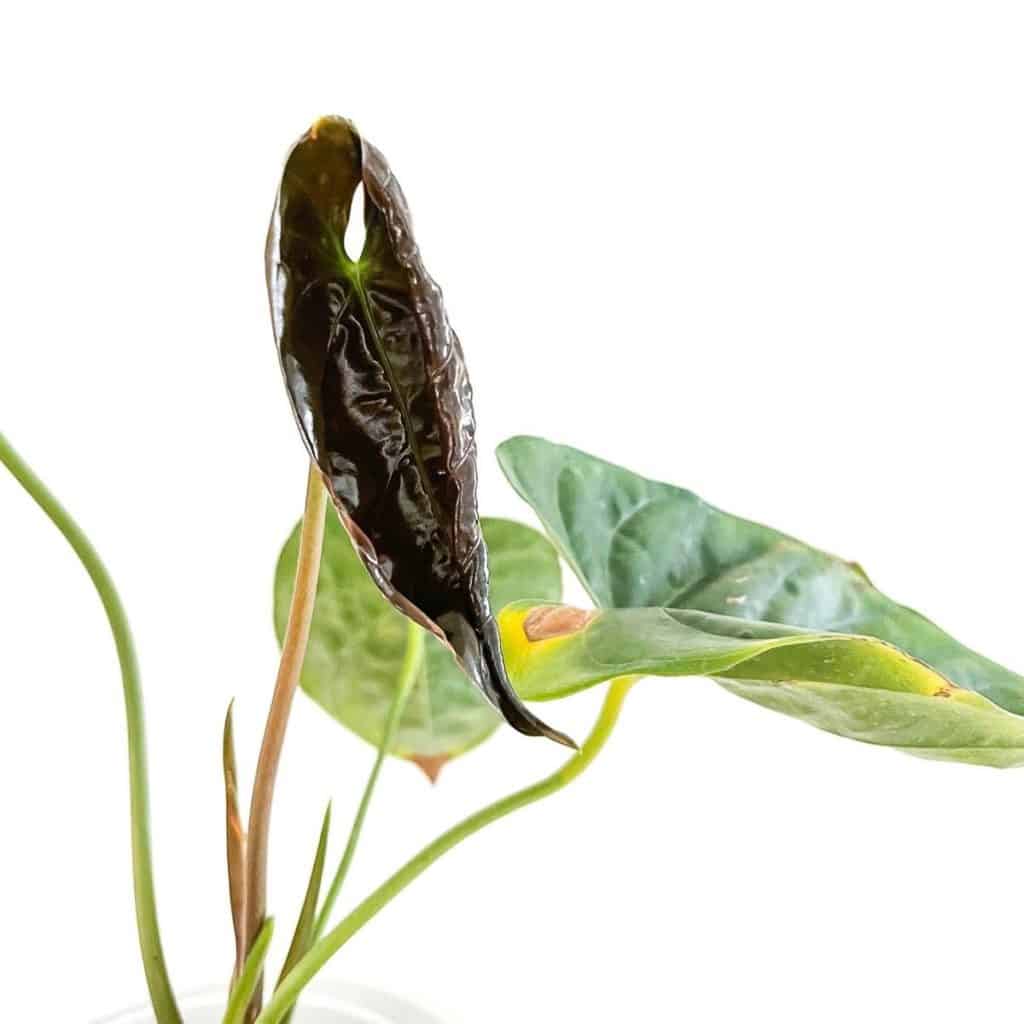
Conversely, in high-light conditions, plants produce more chlorophyll, resulting in darker green leaves. Chlorophyll absorbs light most efficiently in the blue and red parts of the spectrum, which is why leaves appear green, as they reflect green light back to our eyes.
However, the darkness of a leaf is not solely dependent on the amount of chlorophyll present. Other factors, such as the thickness of the leaf, the presence of other pigments, and environmental factors such as light intensity and temperature, can also affect the color and darkness of leaves.
One interesting finding, coming from a fellow anthurium grower is that solid nutrition (read fertilizer) is also adding to the development of dark leaves. He even went on to suggest that fertilizer had a higher impact on the darkness of leaves than light intensity!
But remember, no amount of fertilizer can substitute proper light for your anthurium.
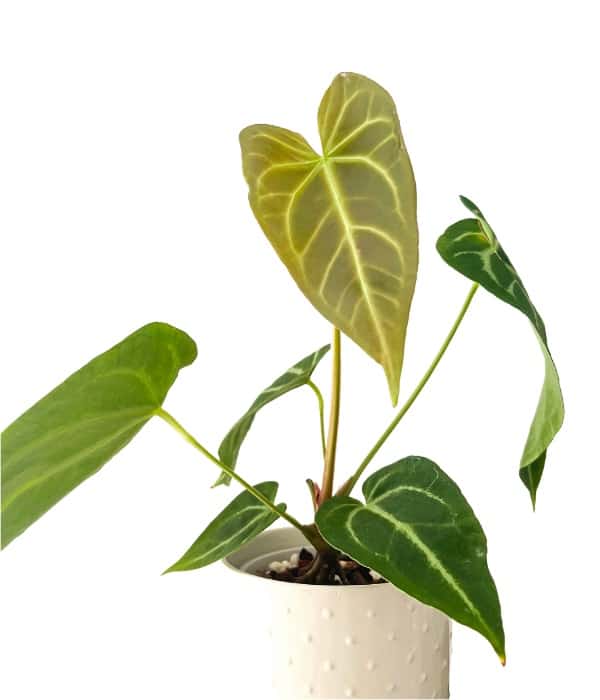
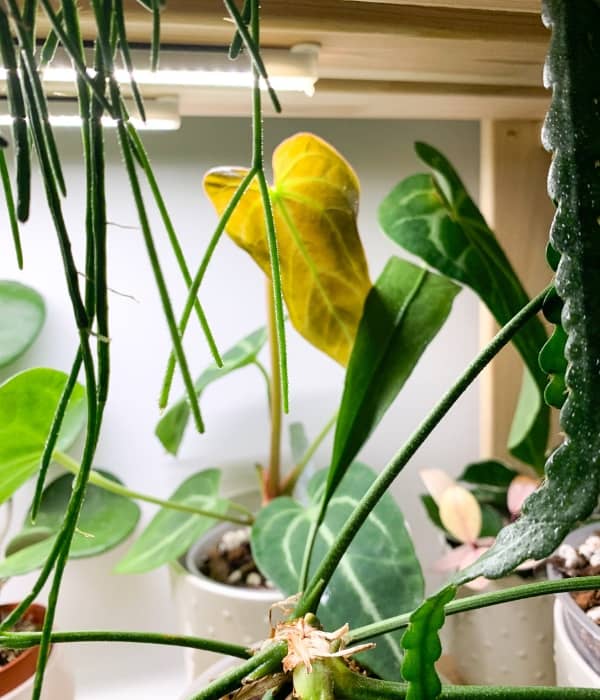
Common light problems
Too much light
When anthurium receives excess light leaves become bleached or faded. Also too much sunlight or too intense grow lights and the leaves will start to have brown tips and eventually will turn brown. Note that crispy tips can also mean underwatering.
The leaves may also wilt or droop as a consequence of too much light. With increased light intensity, your anthurium will use more water so you need to stay on top of your watering game.
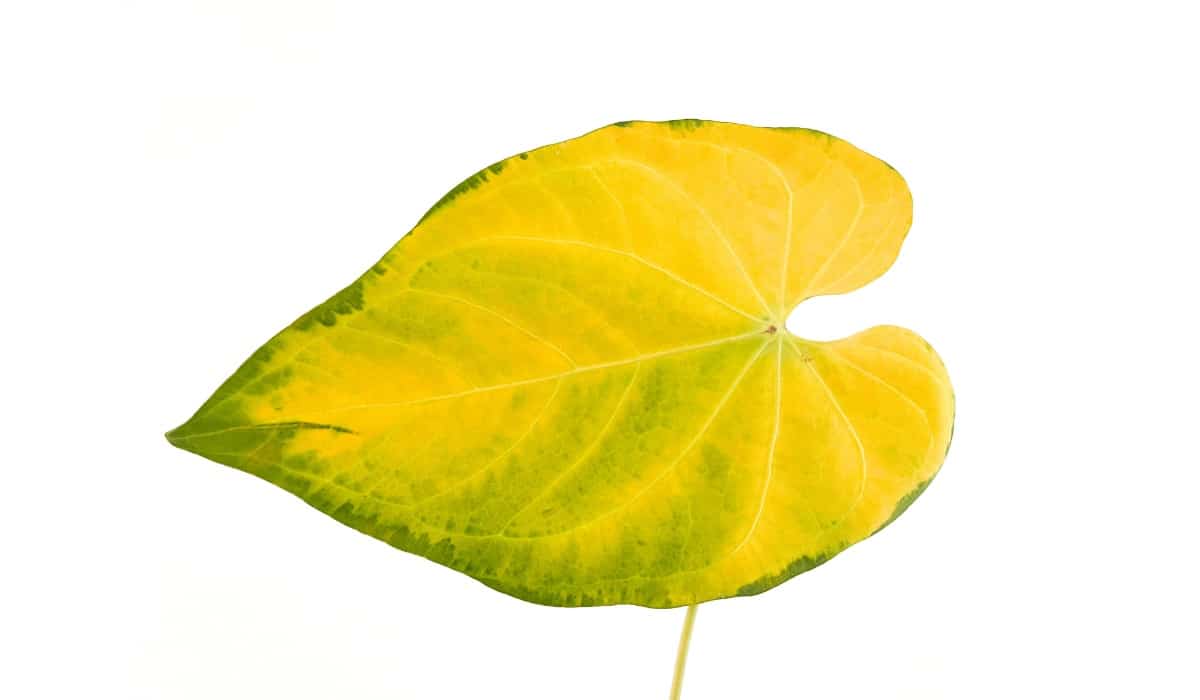
Not enough light
When your anthurium gets too little light you’ll see slow growth or stunted growth. Simply, your plant may not have enough energy to produce new growth. As a consequence, you also won’t see your anthurium producing inflorescences which takes a lot of energy.
As the anthurium plant conserves energy, some leaves may turn yellow and fall off. Most household conditions (except for the bright window sill in summer) provide too little light for optimal growth.
Additional information for the curious mind
Photomorphogenesis
Photomorphogenesis refers to the effect of light on the overall shape and form of a plant. For example, light regulates the elongation of stems, the size and shape of leaves, and the formation of flowers and fruits.
Photoperiodism
Photoperiodism is the process by which plants respond to changes in the duration of light and darkness. For example, some plants require long periods of uninterrupted darkness (known as the “critical night length”) to initiate flowering. Others require short days or long days to flower.
Phototropism
Phototropism refers to the growth or movement of a plant in response to the direction of light. For example, some plants exhibit positive phototropism, meaning they grow towards the source of light, while others exhibit negative phototropism, meaning they grow away from the source of light. This helps plants to orient their growth towards the most optimal light conditions for photosynthesis and growth.

